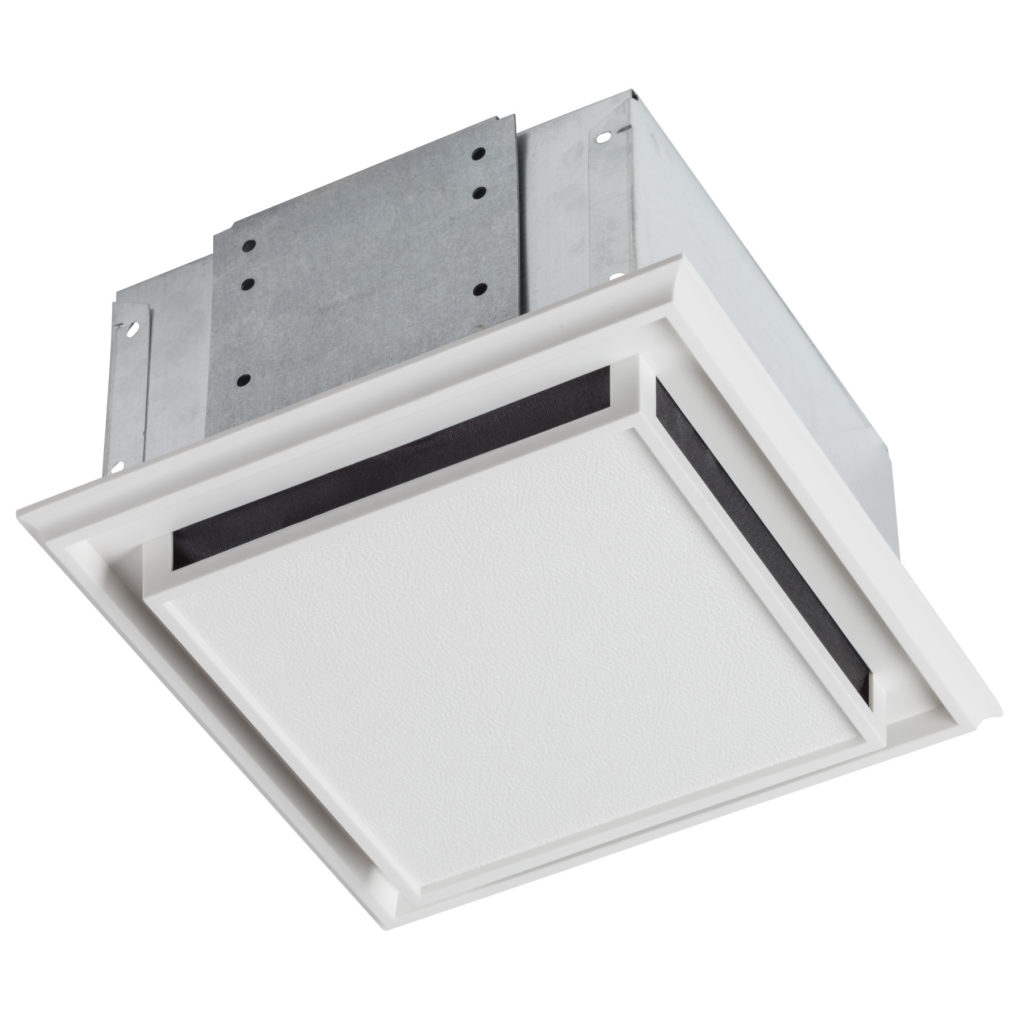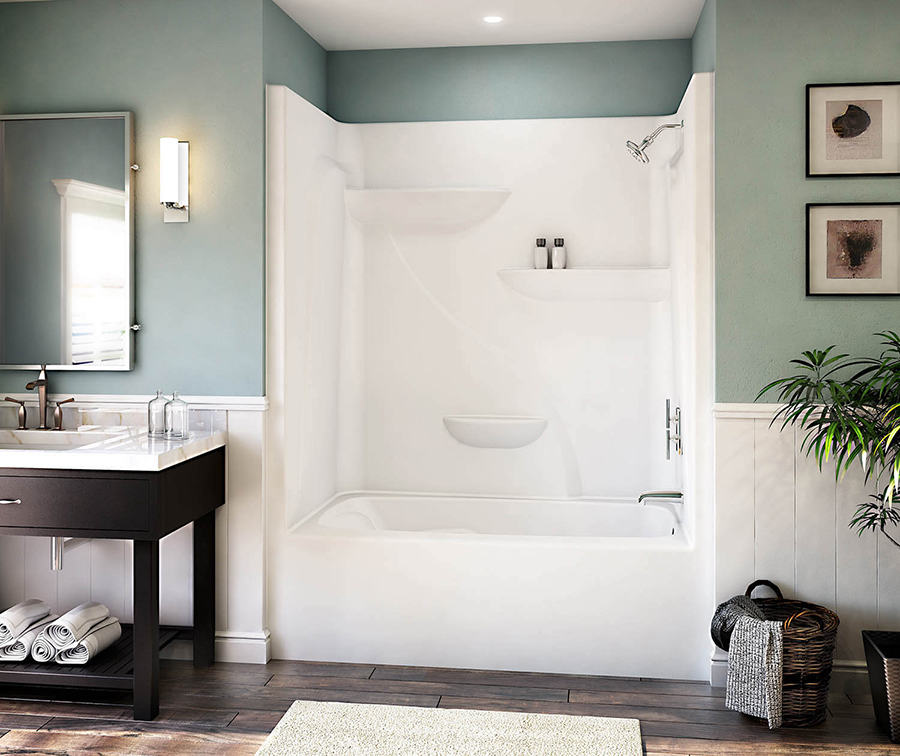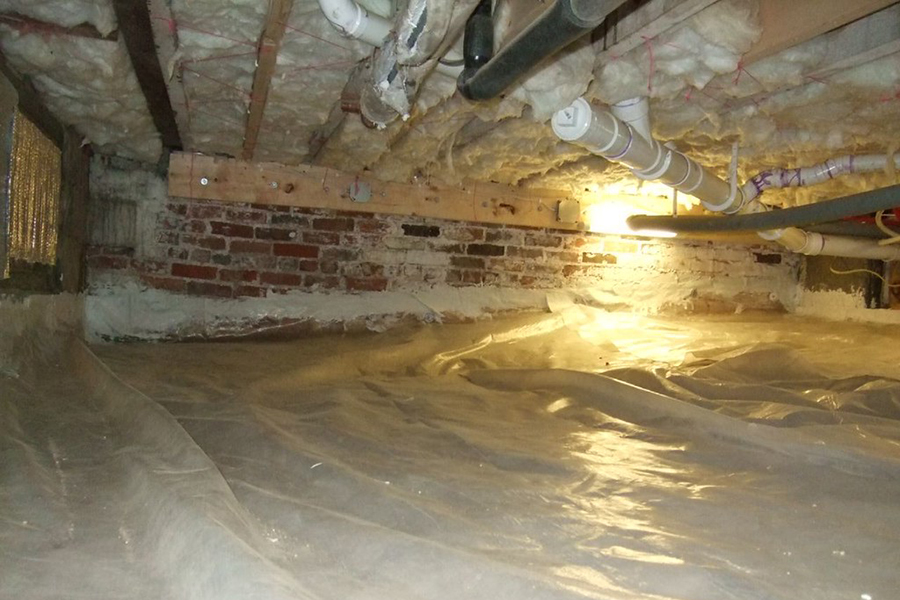Bathrooms can be notorious for moisture issues, and for obvious reasons. Tubs, showers, sinks, pipes, drains, not to mention toilet tank water!
While the general building code for new construction requires bathrooms to exhaust air directly to the exterior of the building, there are still many existing structures that don’t have that option. For those spaces, ductless bathroom fans are often considered to help improve air quality. In this article, we’ll be discussing the features, efficacy, and drawbacks of ductless bathroom fans for improving air quality in your home or business’s bathroom.
What is the point of a ductless fan?
A ductless fan is a fan that does not vent air to the exterior of the building and does not meet code unless paired with a window. A ductless fan is designed for bathrooms without a shower or tub where exterior ducting is impossible. It keeps the air in a bathroom moving and is best if paired with an open window or door for proper ventilation. While this can aid in moisture reduction, it is not designed to eliminate excess moisture from the air.
It can, however, help with odors and musty smells. These fans typically have a lower blade speed, which helps bring a larger amount of air into their charcoal-activated filter. The filter then holds onto those stinky particles and dust mites in the air and then circulates the fresher, filtered air throughout the room, thus removing odors from the air.
Ductless fans of course require electricity to function, but as they do not require ducting to the exterior of the home, can be a bit easier to install in a ceiling or wall. Some homes or businesses have bathrooms in a basement or interior space that makes exterior ventilation impossible. Therefore, ductless fans can be a treatment for cleaner, fresher air, when few other options are available.
The 2018 Internation Residential Code states:
Bathrooms, water closet compartments and other similar room shall be provided with aggregate glazing area in windows of not less than 3 square feet (0.3m2), one-half of which shall be openable.
Exception: The glazed areas shall not be required where artificial light and a local exhaust system are provided... Exhaust air from the space shall be exhausted directly to the outdoors.
What can I do about bathroom moisture?
Some bathroom moisture is inevitable, but there are certainly ways to manage it without forced exterior ventilation. Being aware of your specific climate and environmental conditions will help you decide what action to take. A bathroom should typically have no more than 50% humidity, and 30-50% humidity is a safe range.
Moisture levels above 50% humidity can lead to both health and structural issues for your home and its inhabitants. Microbial growth and mold love moisture and thrive in warm, wet environments. Mold can cause serious health issues and illness if not mitigated. Excess water on surfaces and in the air from bathing will, over time, cause damage to your walls, floors, paint, furniture, doors, and fixtures. It’s not something to mess with!
While a ductless fan can be a short-term aid for humidity, it is not, overall, a solution for moisture management. If you live in a humid climate, near the equator, in a coastal region, or other factors are increasing the humidity in your home and/or bathroom, you might want to consider a dehumidifier instead.
What is a dehumidifier?
A dehumidifier is what it sounds like- it is a device (usually electrically powered) that removes humidity (water in its vapor form) from the air, turning it back to its liquid form. We have a longer breakdown of dehumidifiers that you can use in your bathroom here!
Because of this, you are unlikely to find a ductless ceiling fan that is also a dehumidifier. However, there are dehumidifiers aplenty in today’s market. Smaller, wall-mounted options, countertop options, cordless options, and big beefy roller options are all available from multiple manufacturers to fit any circumstances.
What to look for in a ductless fan for your bathroom
First and foremost, consider your space and environmental conditions. That will help you narrow down which device is best for your needs.
When considering a wall or ceiling-mounted ductless fan, check to see if there is already one in the space. Some bathrooms have light/fan combos, even if no exterior ducting was ever installed with the bathroom. If this is the case, adding a dehumidifier to work in addition to the fan would probably be a good strategy.
If there is no ceiling fan at all in the bathroom, consider switching out the overhead light fixture for a light/fan combo. Additionally, if unused electrical lines are available, you may be able to add a fan and switch with minimal deconstruction. Some fans even come with remotes!
Electrical requirements, the noise level of the fan during operation, filter rate and fan speed, and light/no light are all factors to consider when making your decision on a ductless ceiling or wall fan. These will affect the price and perhaps availability, but knowing what you need and doing research across multiple suppliers will ensure the device perfectly fits your space!
Where else to use a ductless bathroom vent?
These types of fans are not only for your bathroom – you can also consider a ductless fan in other parts of your home. You may want to use one in a walk-in closet, laundry room, or basement. This will keep the air moving and help with any unwanted scents.
Are ventless bathroom fans worth it?
Ultimately, if you have a half bath or powder room with no window or exterior ventilation, a ductless fan will help with musty or stinky odors, and keep the air fresher. However, as a singular moisture reduction solution for a full bathroom- nope. You will need a dehumidifier! If you have a bathroom with a window and no exhaust, a ventless bathroom fan will help to circulate the air. If you are building new or remodeling, ducted exhaust fans are the best option. Before taking any action, be sure to check with your specific municipality about their requirements for bathroom exhaust.
Let us know what you think about the efficacy of ductless bathroom fans below!




